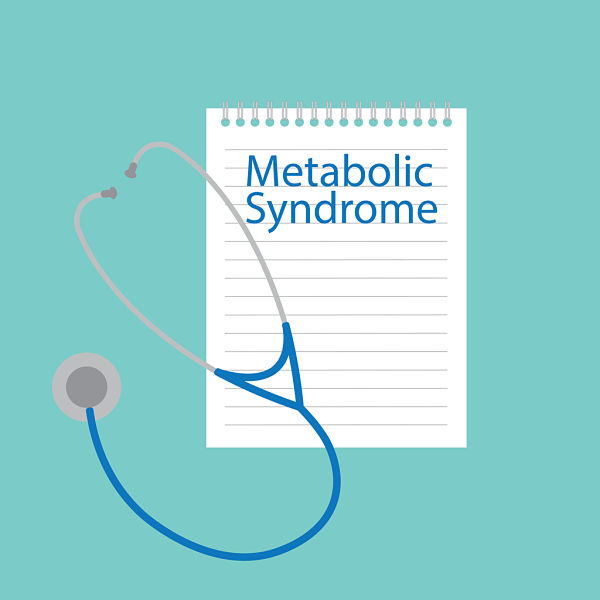What is metabolic syndrome?

First identified in 1988 “metabolic syndrome” is believed to affect one in four UK adults. With rising levels of obesity and the ageing demographic of the population it is predicted to overtake smoking as the leading cause of an increased risk of heart disease.
The term refers to a group of risk factors which together raise the likelihood of heart attacks, strokes and diabetes. These risk factors are:
- Insulin resistance
- Diabetes or glucose intolerance
- A large waistline
- A high level of triglycerides
- A low level of HDL cholesterol
- High blood pressure
- High uric acid
This is a global problem; an American study which ran between 1988 and 2012 saw the prevalence of this condition increase by 35% and within every sociodemographic group. It claimed that more than one third of US adults met the definition and criteria of metabolic syndrome even as far back as 2012.
More about the risk factors of metabolic syndrome
Obesity, high blood pressure and diabetes can each damage your blood vessels but having a combination of all three is particularly dangerous
For more information about insulin resistance please see this blog post
Adults with diabetes most commonly die from heart disease or stroke because the high blood glucose in the body is associated with damage to the blood vessels and nerves that control the heart.
For more information about the ideal waist circumference please see this blog post
HDL and triglycerides are blood fats which are measured as millimoles per litre and expressed as mmol/L in this country.
- HDL cholesterol is sometimes referred to as “good cholesterol” and it should be above 1mmol/L in men and 1.2 mmol/L in women
- Triglyceride should be below 1.7mmol/L for both men or women (or less than 2.3mmol/L if you have eaten before the test)
High triglycerides and low HDL can contribute to clogging of the arteries which is known as atherosclerosis.
Blood pressure becomes a problem if it is continually more than 140/80 mmHg.
Other conditions that may be connected to metabolic syndrome
We know that excessive blood clotting and constant low grade inflammation in the body are often associated with this syndrome.
Other conditions may also play a role, and for that reason research is looking into connections between metabolic syndrome and
- A fatty liver
- Gout or high levels of uric acid in the blood
- Obstructive sleep apnoea
- PCOS (We already know that women with PCOS are 11 times more likely to have metabolic syndrome than those without) PCOS is described here
Your risk increases as you become older and there is a higher probability for certain ethnic groups such as Asian or African Caribbean.
Preventing or reversing metabolic syndrome
Because this condition is associated with being overweight and having low levels of activity the solution lies not in a one off action but in the adoption of a healthy lifestyle which should include
- Getting at least 30 minutes of physical activity most days
- Eating plenty of vegetables, fruits, lean protein and whole grains
- Limiting saturated fat and salt in your diet
- Losing at least 5% of your body weight and then maintaining it at a healthy level
- Not smoking
- Cutting down on alcohol
Your GP may additionally prescribe medication to help you control your blood pressure, blood sugars and cholesterol.
I do hope this has given you food for thought.
Although every effort is made to ensure that all health advice on this website is accurate and up to date it is for information purposes and should not replace a visit to your doctor or health care professional.
As the advice is general in nature rather than specific to individuals Dr Vanderpump cannot accept any liability for actions arising from its use nor can he be held responsible for the content of any pages referenced by an external link
.










